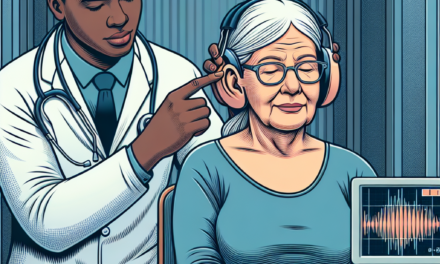Understanding Dental Emergencies and How to Handle Them
Dental emergencies can occur at any time, often without warning, and can lead to significant pain, discomfort, and even long-term health issues if not addressed promptly. Understanding the types of dental emergencies, their causes, and how to handle them is crucial for maintaining oral health. This article will explore various aspects of dental emergencies, including common types, immediate care steps, prevention strategies, when to seek professional help, and the importance of having a dental emergency plan.
1. Common Types of Dental Emergencies
Dental emergencies can be categorized into several types, each requiring different responses and treatments. Understanding these types can help individuals recognize when they are facing a dental emergency.
1.1 Toothaches
Toothaches are one of the most common dental emergencies. They can result from various issues, including cavities, gum disease, or tooth fractures. The pain can range from mild discomfort to severe agony, often radiating to the jaw, neck, or ear.
- Cavities: Decay can lead to inflammation of the dental pulp, causing intense pain.
- Gum Disease: Infections in the gums can lead to abscesses, resulting in throbbing pain.
- Fractured Teeth: A crack or break in a tooth can expose nerves, leading to sharp pain.
In many cases, over-the-counter pain relievers can provide temporary relief, but it is essential to consult a dentist to address the underlying cause.
1.2 Knocked-Out Teeth
Also known as avulsed teeth, knocked-out teeth are a serious dental emergency that requires immediate attention. This situation often occurs due to sports injuries, falls, or accidents.
- Immediate Action: If a tooth is knocked out, it is crucial to handle it by the crown (the top part) and avoid touching the root.
- Storage: The tooth should be rinsed gently with water and placed in a container with milk or saline solution to keep it moist.
- Time Sensitivity: The sooner a dentist can re-implant the tooth, the better the chances of saving it.
Statistics show that if a knocked-out tooth is re-implanted within 30 minutes, the success rate is significantly higher.
1.3 Broken or Chipped Teeth
Broken or chipped teeth can occur due to biting hard foods, accidents, or falls. While they may not always cause immediate pain, they can lead to complications if not treated.
- Types of Fractures: Fractures can range from minor chips to severe breaks that expose the pulp.
- Symptoms: Sensitivity to temperature changes and pain when chewing are common symptoms.
- Treatment Options: Depending on the severity, treatment may include dental bonding, crowns, or root canals.
Ignoring a broken tooth can lead to infections and further damage, making prompt dental care essential.
1.4 Abscesses
A dental abscess is a localized infection that can occur at the root of a tooth or in the gums. It is often caused by untreated cavities or gum disease and can lead to severe pain and swelling.
- Symptoms: Symptoms include swelling, redness, fever, and a bad taste in the mouth.
- Complications: If left untreated, abscesses can lead to systemic infections and serious health issues.
- Treatment: Treatment typically involves draining the abscess and addressing the underlying cause, such as a root canal or extraction.
Statistics indicate that untreated dental abscesses can lead to hospitalization and severe complications, emphasizing the need for immediate care.
1.5 Soft Tissue Injuries
Injuries to the soft tissues of the mouth, including the gums, tongue, and cheeks, can occur due to accidents or trauma. These injuries can be painful and may lead to bleeding.
- Common Causes: Biting the tongue or cheek, sports injuries, or accidents can cause soft tissue injuries.
- First Aid: Rinsing the mouth with warm salt water can help reduce swelling and prevent infection.
- When to Seek Help: If bleeding does not stop after 10 minutes or if the injury is severe, professional help is necessary.
Soft tissue injuries may seem minor, but they can lead to infections if not properly treated.
2. Immediate Care Steps for Dental Emergencies
Knowing how to respond to a dental emergency can make a significant difference in the outcome. Here are some immediate care steps for various dental emergencies.
2.1 Toothaches
When experiencing a toothache, the first step is to identify the cause. Here are some immediate care steps:
- Rinse with Warm Salt Water: This can help reduce inflammation and clean the affected area.
- Over-the-Counter Pain Relief: Medications like ibuprofen or acetaminophen can help alleviate pain.
- Cold Compress: Applying a cold compress to the outside of the cheek can reduce swelling and numb the pain.
If the pain persists for more than a day or is accompanied by fever, it is essential to see a dentist as soon as possible.
2.2 Knocked-Out Teeth
For a knocked-out tooth, immediate action is crucial:
- Handle with Care: Pick up the tooth by the crown and avoid touching the root.
- Rinse Gently: If dirty, rinse the tooth gently with water but do not scrub it.
- Store Properly: Place the tooth in a container with milk or saline solution to keep it moist.
- Seek Immediate Dental Care: Visit a dentist within 30 minutes for the best chance of re-implantation.
Time is of the essence in this situation, and quick action can save the tooth.
2.3 Broken or Chipped Teeth
If you have a broken or chipped tooth, follow these steps:
- Rinse Your Mouth: Use warm water to clean the area and remove any debris.
- Apply a Cold Compress: This can help reduce swelling and numb the pain.
- Avoid Hard Foods: Stick to soft foods and avoid chewing on the affected side until you see a dentist.
- Contact Your Dentist: Schedule an appointment as soon as possible for evaluation and treatment.
Prompt care can prevent further damage and complications.
2.4 Abscesses
For a dental abscess, immediate care is essential to prevent the spread of infection:
- Rinse with Salt Water: This can help alleviate discomfort and clean the area.
- Over-the-Counter Pain Relief: Pain relievers can help manage discomfort until you see a dentist.
- Do Not Squeeze: Avoid trying to drain the abscess yourself, as this can worsen the infection.
- Seek Professional Help: Visit a dentist immediately for proper treatment.
Abscesses can lead to serious health issues if not treated promptly.
2.5 Soft Tissue Injuries
For soft tissue injuries, follow these steps:
- Rinse with Warm Salt Water: This can help clean the wound and reduce the risk of infection.
- Apply Pressure: If there is bleeding, apply gentle pressure with a clean cloth or gauze.
- Cold Compress: Use a cold compress to reduce swelling and numb the area.
- Seek Dental Care: If bleeding does not stop after 10 minutes or if the injury is severe, see a dentist.
Soft tissue injuries can be painful and may require professional treatment to ensure proper healing.
3. Prevention Strategies for Dental Emergencies
While dental emergencies can happen unexpectedly, there are several strategies individuals can adopt to minimize their risk. Prevention is key to maintaining oral health and avoiding painful situations.
3.1 Regular Dental Check-Ups
One of the most effective ways to prevent dental emergencies is through regular dental check-ups. These visits allow dentists to:
- Identify Issues Early: Regular exams can catch cavities, gum disease, and other issues before they become emergencies.
- Professional Cleanings: Cleanings help remove plaque and tartar buildup, reducing the risk of decay and gum disease.
- Patient Education: Dentists can provide personalized advice on oral hygiene and preventive care.
Statistics show that individuals who visit the dentist regularly are less likely to experience dental emergencies compared to those who do not.
3.2 Proper Oral Hygiene
Maintaining good oral hygiene is essential for preventing dental emergencies. Here are some key practices:
- Brush Twice Daily: Use fluoride toothpaste and brush for at least two minutes each time.
- Floss Daily: Flossing helps remove food particles and plaque from between teeth, reducing the risk of cavities and gum disease.
- Mouthwash: Using an antimicrobial mouthwash can help reduce bacteria in the mouth.
Good oral hygiene practices can significantly lower the risk of developing dental issues that may lead to emergencies.
3.3 Protective Gear for Sports
For individuals involved in contact sports, wearing protective gear is crucial for preventing dental injuries:
- Custom Mouthguards: A custom-fitted mouthguard can protect teeth from impact during sports activities.
- Helmets and Face Guards: Wearing appropriate headgear can also help prevent facial injuries that may affect the teeth.
- Education: Athletes should be educated on the importance of wearing protective gear during practices and games.
Statistics indicate that athletes who wear mouthguards are less likely to sustain dental injuries compared to those who do not.
3.4 Avoiding Hard Foods
Certain foods can pose a risk to dental health, especially for individuals with existing dental issues:
- Avoid Hard Candies: These can break or chip teeth if bitten down on too hard.
- Be Cautious with Nuts: While healthy, nuts can also lead to broken teeth if bitten incorrectly.
- Limit Ice Chewing: Chewing on ice can lead to fractures and should be avoided.
Being mindful of what you eat can help prevent dental emergencies related to broken or chipped teeth.
3.5 Education and Awareness
Educating oneself and family members about dental health can play a significant role in prevention:
- Understanding Symptoms: Knowing the signs of dental issues can lead to early intervention.
- Emergency Plans: Having a plan in place for dental emergencies can reduce panic and ensure prompt care.
- Community Resources: Familiarizing oneself with local dental clinics and emergency services can be beneficial.
Awareness and education can empower individuals to take charge of their dental health and reduce the likelihood of emergencies.
4. When to Seek Professional Help
Knowing when to seek professional help is crucial in managing dental emergencies effectively. Here are some guidelines for determining when to contact a dentist or visit an emergency room.
4.1 Persistent Pain
If you experience persistent or severe pain that does not improve with over-the-counter pain relief, it is essential to seek professional help. This could indicate an underlying issue that requires treatment, such as:
- Cavities: Untreated cavities can lead to infections and abscesses.
- Gum Disease: Advanced gum disease can cause significant pain and tooth loss.
- Fractured Teeth: A fracture may expose nerves and require immediate attention.
Ignoring persistent pain can lead to more severe complications and increased treatment costs.
4.2 Swelling and Inflammation
Swelling in the gums or face can indicate an infection or abscess. If you notice swelling accompanied by:
- Fever: A fever may indicate a systemic infection that requires immediate care.
- Pus or Discharge: The presence of pus suggests an abscess that needs to be drained.
- Difficulty Breathing or Swallowing: These symptoms require emergency medical attention.
Swelling and inflammation should never be ignored, as they can lead to serious health issues if left untreated.
4.3 Knocked-Out Teeth
If a tooth has been knocked out, it is crucial to seek professional help immediately. The chances of saving the tooth are highest when:
- Immediate Action is Taken: The sooner you see a dentist, the better the chances of successful re-implantation.
- Proper Storage: Keeping the tooth moist in milk or saline can help preserve it until you reach the dentist.
Time is critical in this situation, and prompt action can make all the difference.
4.4 Soft Tissue Injuries
If you experience a soft tissue injury that results in significant bleeding or does not stop after 10 minutes of applying pressure, it is essential to seek professional help. Other signs that require attention include:
- Severe Pain: Intense pain may indicate a more serious injury that needs treatment.
- Signs of Infection: Redness, swelling, or pus can indicate an infection that requires medical intervention.
Soft tissue injuries can lead to complications if not treated properly, making it essential to seek care when necessary.
4.5 Uncontrolled Bleeding
If you experience uncontrolled bleeding from the mouth, it is crucial to seek emergency medical attention. This could indicate a serious injury or condition that requires immediate care. Signs to watch for include:
- Bleeding that Persists: If bleeding does not stop after 10 minutes of applying pressure, seek help.
- Large Blood Clots: The presence of large clots may indicate a more serious issue.
Uncontrolled bleeding can be life-threatening and should never be ignored.
5. The Importance of Having a Dental Emergency Plan
Having a dental emergency plan in place can significantly reduce stress and ensure prompt care during a crisis. Here are some key components of an effective dental emergency plan.
5.1 Know Your Dentist’s Contact Information
Keep your dentist’s contact information readily available, including their office hours and emergency contact details. This ensures that you can reach out for help quickly when needed. Consider:
- Storing Information: Keep your dentist’s contact information saved in your phone and written down in a visible location at home.
- Emergency Services: Know if your dentist offers emergency services or if there is an after-hours clinic nearby.
Having this information on hand can save valuable time during an emergency.
5.2 Create a First Aid Kit
Having a dental first aid kit at home can help you manage minor dental emergencies effectively. Consider including:
- Pain Relievers: Over-the-counter medications like ibuprofen or acetaminophen.
- Salt for Rinsing: To help with oral hygiene and reduce inflammation.
- Gauze and Bandages: For managing soft tissue injuries and bleeding.
- Mouthguard: A sports mouthguard can help protect teeth during physical activities.
A well-stocked first aid kit can provide immediate relief and support until professional help is available.
5.3 Educate Family Members
Ensure that all family members are aware of the dental emergency plan and know how to respond in case of an emergency. This includes:
- Recognizing Symptoms: Teach family members how to identify signs of dental emergencies.
- Emergency Contacts: Make sure everyone knows how to contact the dentist and where to find emergency services.
Education and awareness can empower family members to act quickly and effectively during a dental emergency.
5.4 Practice Emergency Scenarios
Practicing emergency scenarios can help family members feel more prepared and confident in handling dental emergencies. Consider:
- Role-Playing: Simulate different dental emergencies and discuss appropriate responses.
- Reviewing First Aid Steps: Go over the steps for managing common dental emergencies together.
Practicing these scenarios can help reduce panic and ensure a more effective response during an actual emergency.
5.5 Stay Informed About Dental Health
Staying informed about dental health and advancements in dental care can help individuals make better decisions regarding their oral health. Consider:
- Regular Education: Attend dental health workshops or seminars to learn about preventive care and emergency management.
- Follow Trusted Sources: Stay updated on dental health information from reputable sources, such as dental associations and healthcare providers.
Being informed can empower individuals to take proactive steps in maintaining their dental health and managing emergencies effectively.
Conclusion
Understanding dental emergencies and how to handle them is essential for maintaining oral health and preventing long-term complications. By recognizing common types of dental emergencies, knowing immediate care steps, implementing prevention strategies, and having a dental emergency plan in place, individuals can significantly reduce their risk of experiencing dental crises. Remember that prompt action is crucial in managing dental emergencies effectively, and seeking professional help when necessary can make all the difference in preserving oral health. By prioritizing dental care and education, individuals can navigate dental emergencies with confidence and ensure their smiles remain healthy and bright.




